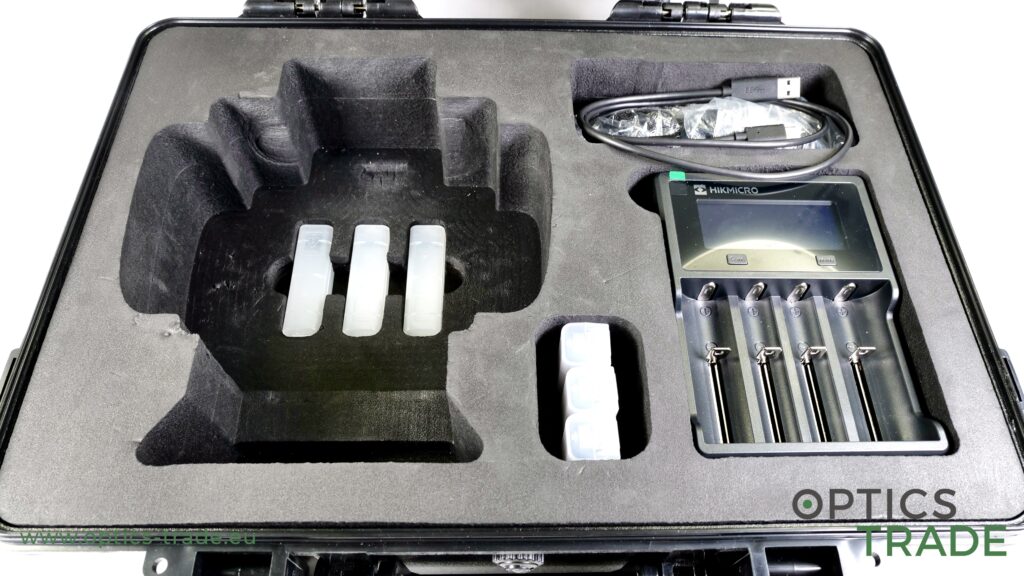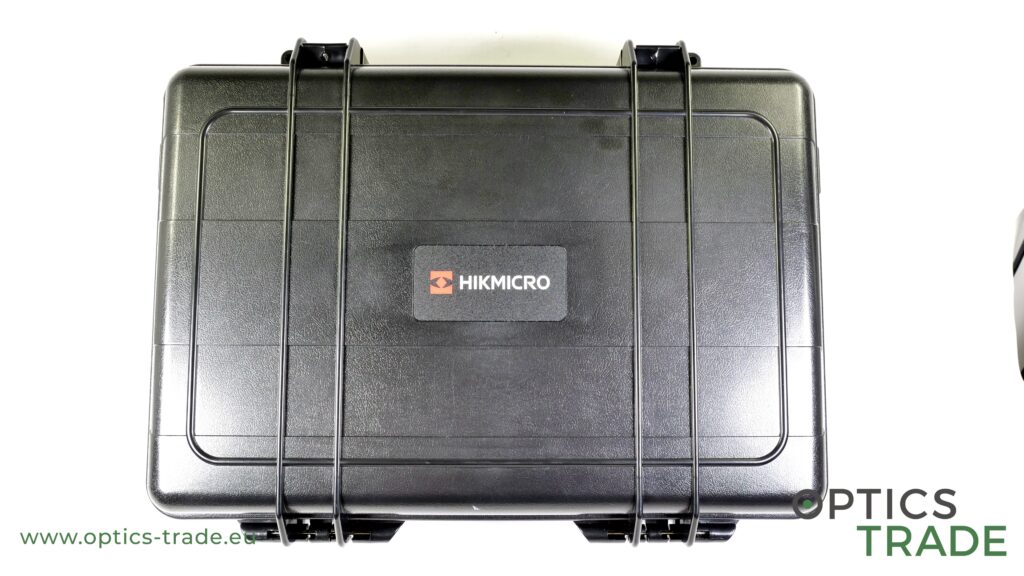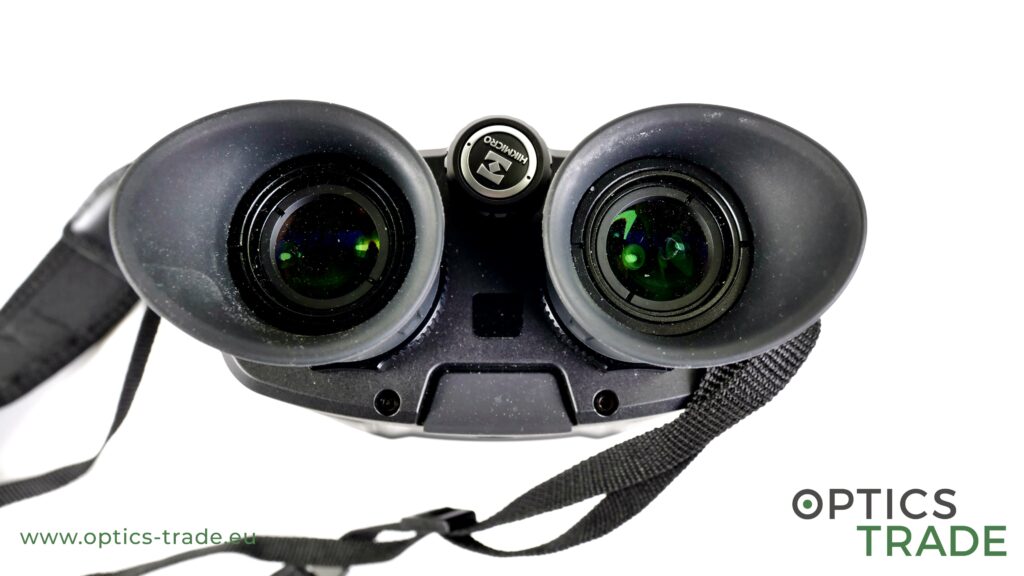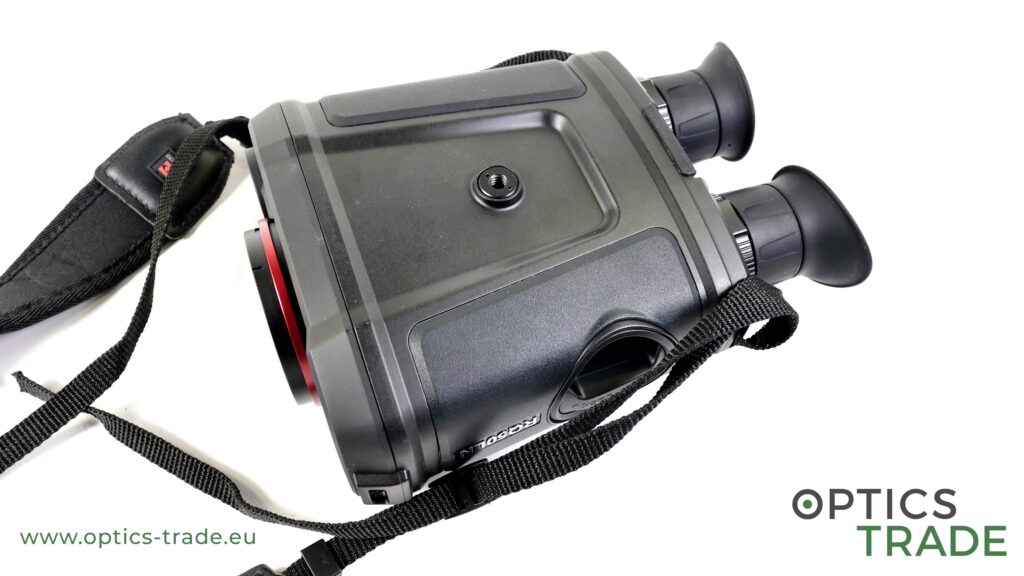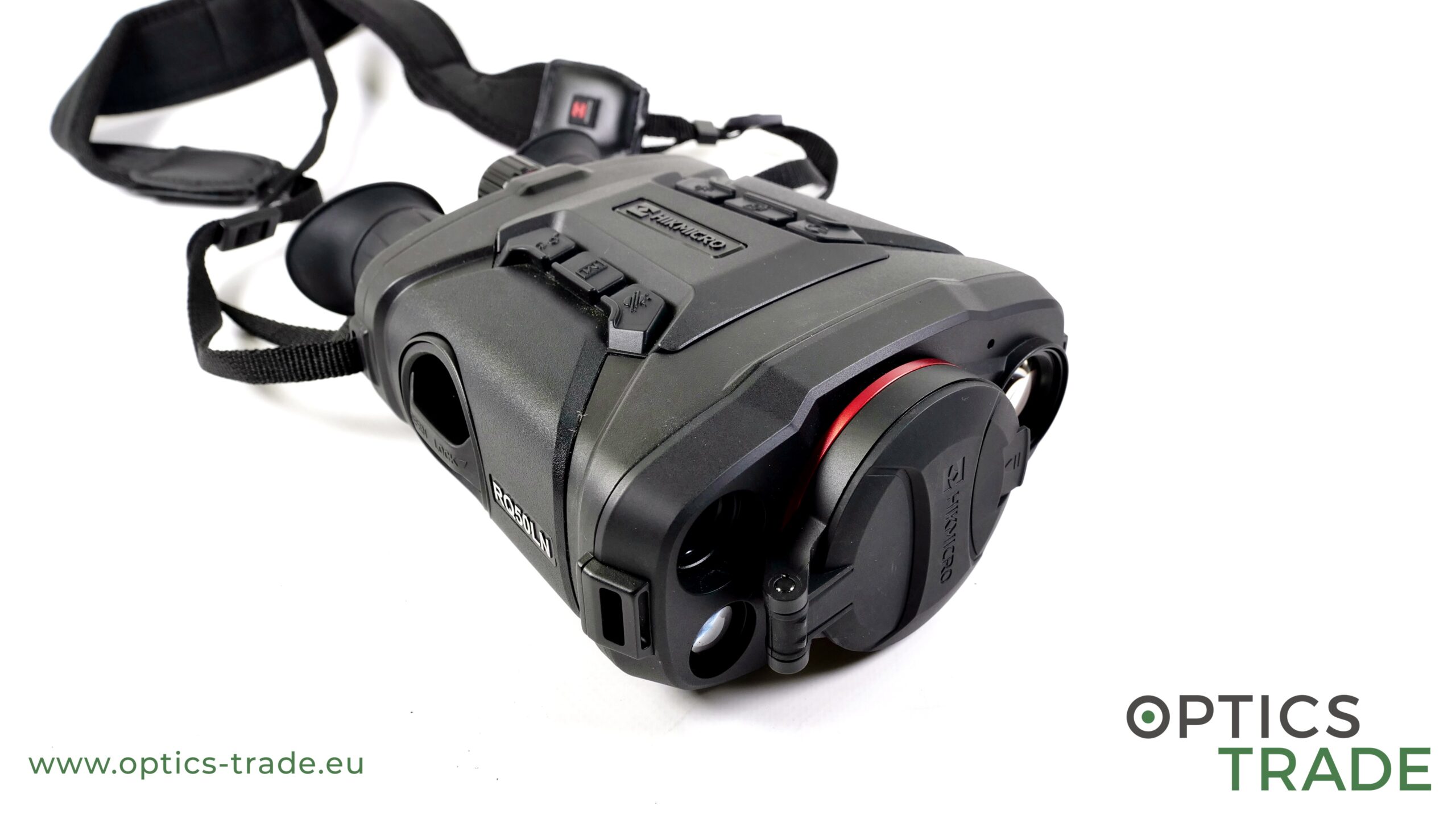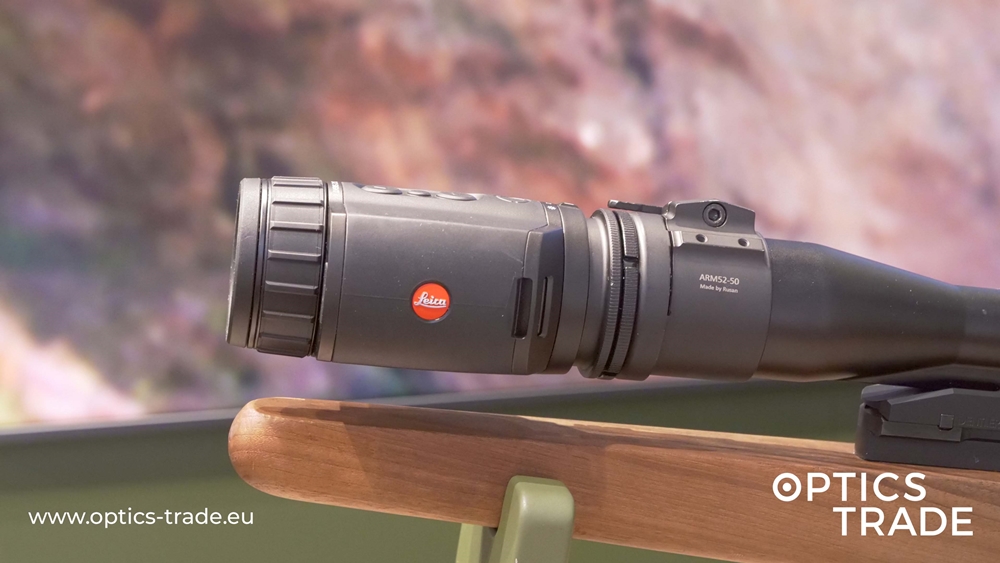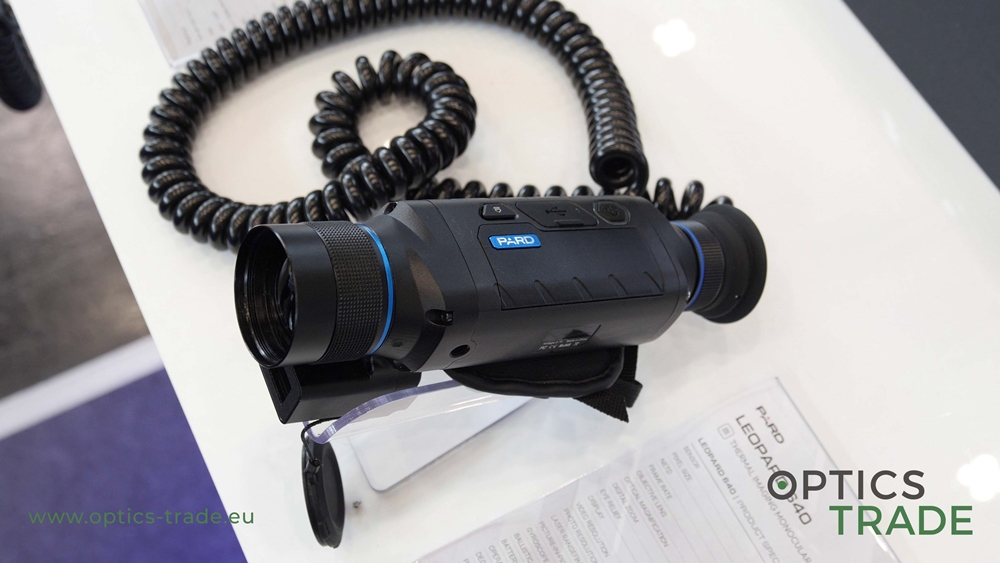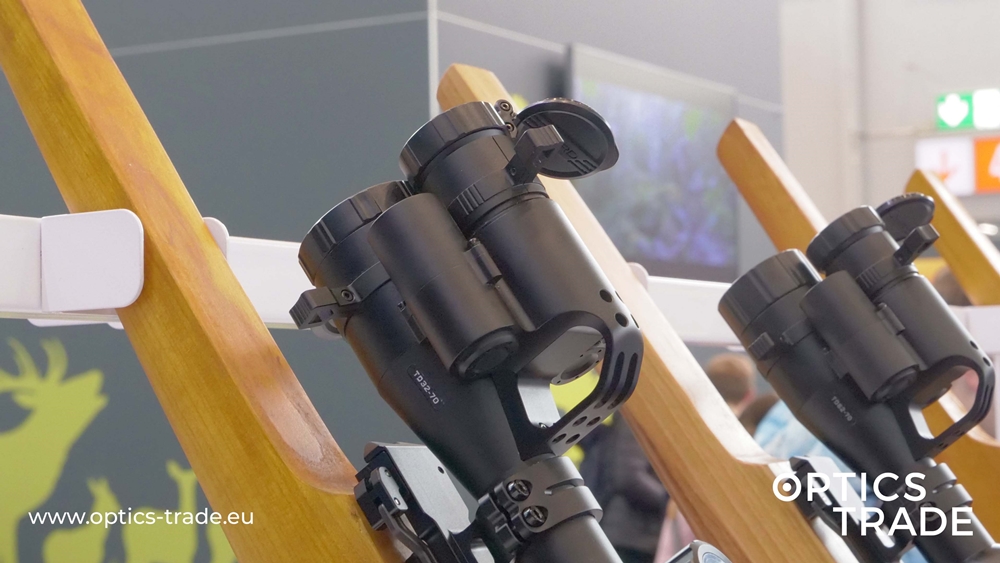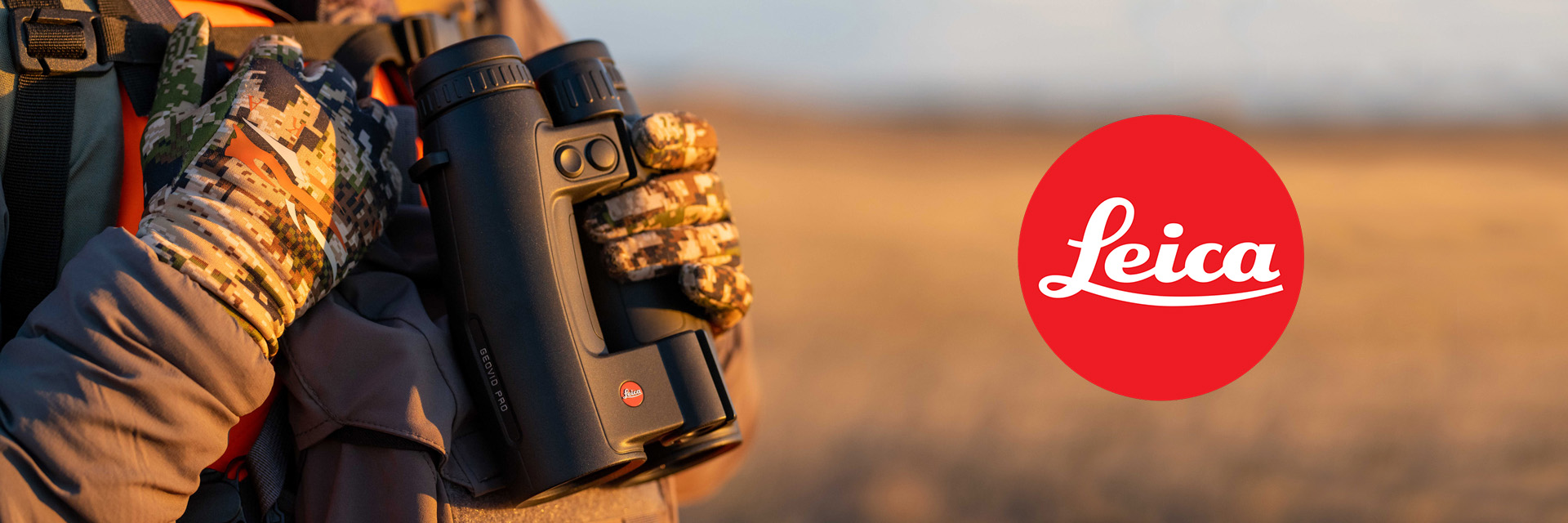Do you remember the good old times when we went hunting with just binoculars around our necks and a rifle on our shoulder? For most hunters, that is just a distant memory as today we carry a bunch of other gadgets with us, made possible by technological advancements.
It’s not unusual to have a thermal or digital night vision monocular, a laser rangefinder, a camera, a night vision clip-on attachment, a mobile phone, active ear protectors, a shooting stick, a traditional flashlight, a hunting knife, and probably more, all on a hunting trip. It’s no wonder that sometimes we run out of space in our hunting gear and have to compromise on what to take with us.
Interested in Fusion Binoculars?
General Information about Hikmicro Raptor RQ50LN
Recently, HIKMICRO introduced a product that can help us with the issues highlighted above. The Raptor RQ50LN is a device slightly larger than a regular binocular, combining the functions of four different hunting accessories.
There are two models to choose from:
- the RQ50LN, which comes with an 850 nm IR illuminator, and
- the RQ50LN, which features a 940 nm IR illuminator.
For the purpose of this test, we opted for the RQ50LN device with the built-in 940nm illuminator.
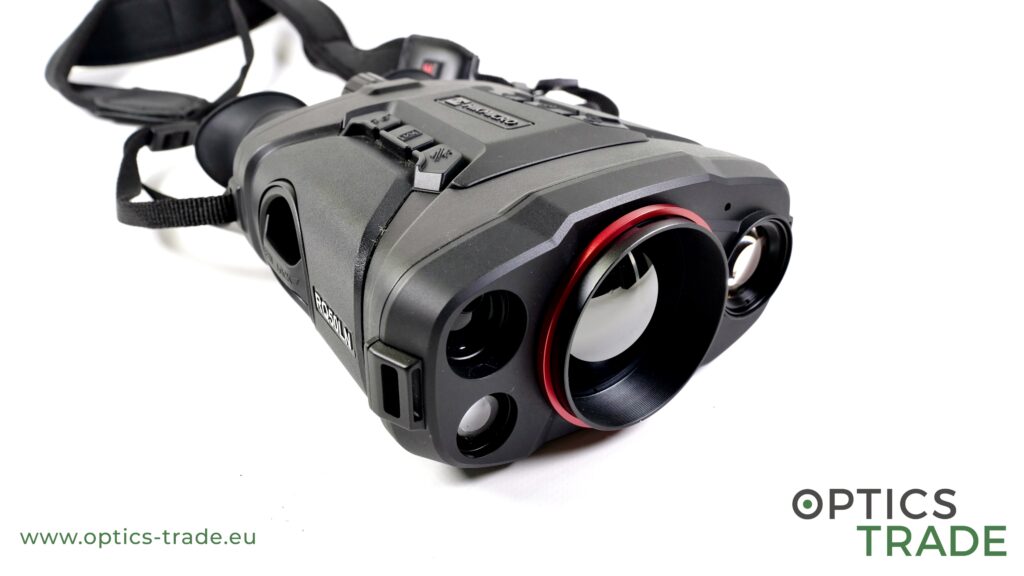
The device features a powerful thermal imaging binocular with top-notch technical specifications, a day-night optical channel with a built-in IR illuminator, a laser rangefinder with a useful range of 1000 meters, and the ability to capture digital video recordings and high-resolution 2560 x 1440-pixel photos.
The idea sounds great on paper and could indeed be a solution for many hunters who need these capabilities during their outings in the hunting grounds. However, there’s always a hint of doubt as to whether the manufacturer has truly succeeded in combining all the described functionalities into one device while preserving the pristine technical characteristics of each individual device. Some physical laws simply cannot be bypassed, so combining multiple devices into one usually requires certain compromises.
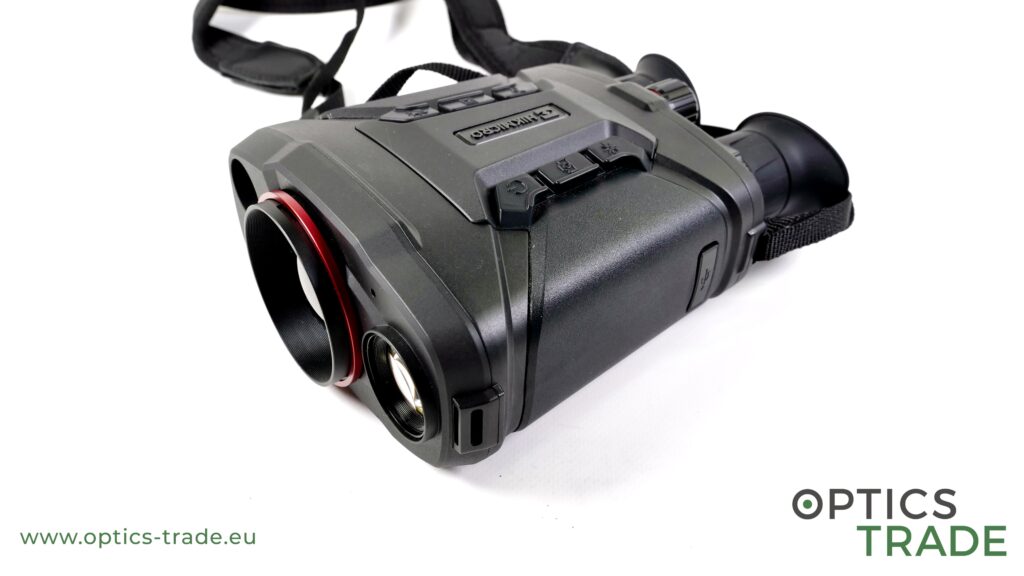
All-in-one device
The biggest challenge is undoubtedly maintaining the compactness of such a device. Anything larger than regular hunting binoculars with a 42mm objective lens stands out in terms of size and weight. Binoculars with 50mm or even 56mm lenses are not suitable for wearing around the neck all day but are usually intended for waiting on high stands in the twilight or moonlight. However, for a device that actually enables true multi-functionality, slightly larger dimensions, such as those of binoculars with 56mm lenses, would likely be acceptable.
Therefore, before testing the HIKMICRO Raptor RQ50LN, we asked ourselves the following question: Can such a device, considering certain necessary compromises, truly serve as an “all-in-one” device and replace the traditional binoculars, thermal monocular, laser rangefinder, and digital day/night observation device with recording and photography capabilities?
The quest to find the answer to this question took place in April when, in most Slovenian hunting grounds, the hunting season is more or less dormant, at least in terms of game culling. Real hunters, however, utilize this time for observing deer and searching for animals that can be hunted after the first of May.
For this purpose, a high-quality hunting binocular is necessary, which puts the day/night optical channel on the HIKMICRO Raptor RQ50LN to a demanding test.
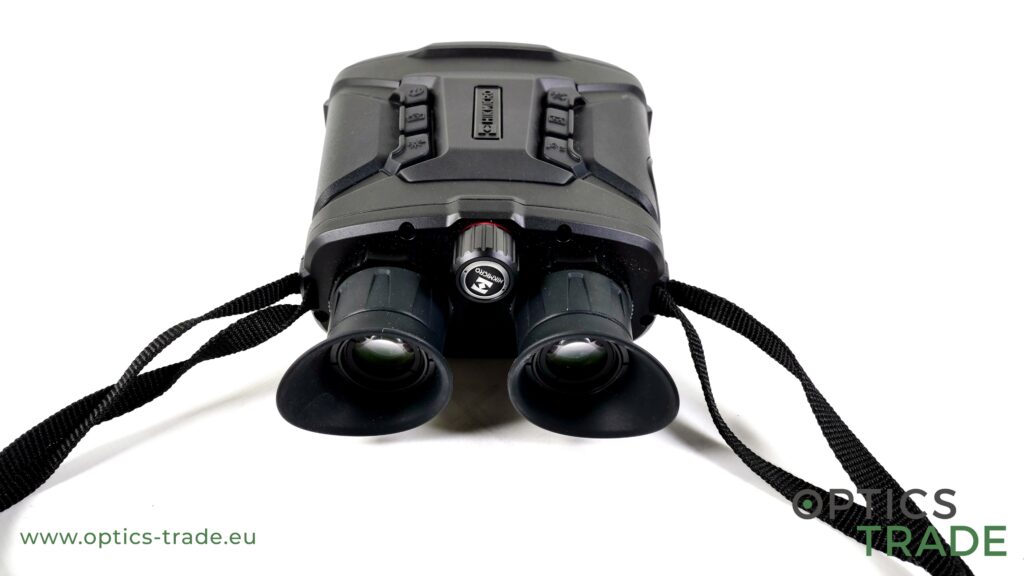
Technical Specifications
| Thermal channel | |
| Sensor | VOx Uncooled 640 × 512 pixels 12 µm NETD <20 mK |
| Lens | 50 mm / F 0.9 |
| Magnification | 3.4 x basic optical (2x,4x, 8x in 16x digital zoom) |
| Field of view | 15.4 m/100 m |
| Detection range | 2600 m |
| Min. focusing range | 5 m |
| Optical channel | |
| Sensor | 2560 x 1440 pixels; Progressive Scan CMOS |
| Lens | 31 mm / F1.2 |
| Detection range | 350 m |
| IR illuminator | 940 nm |
| Min. focusing range | NO focusing possibility |
| Laser rangefinder | |
| Laser | Class 1 / 905 nm |
| Max. measuring distance | 1000 m |
| Measurement Accuracy | ± 1 m |
| Display | OLED, 1024 ×768 pixels |
| Power supply | 3x 18650 Li-ion batteries operating time 8 h USB-C |
| Dimensions | 217.5 mm × 155.0 mm × 87.5mm 1120 g |
| Protection level | IP67 |
| Video/photo recording | Resolution: 1600 x 1200 pixels Format: mp4 / .jpg 64 GB internal memory |
How We Conducted the Testing
To assess such an all-round device, we prepared a scenario that allowed us to evaluate its individual components and overall utility. We chose to focus on monitoring the population of roedeer during the spring season. Observations were conducted in the morning and evening.
Testing the Raptor RQ50LN in the Morning
In the early morning, we arrived at the hunting grounds in complete darkness, using thermal imaging for a quick assessment of the situation between us and the elevated stand from which we intended to observe. This helped us determine the most suitable approach direction to minimize disturbance to the wildlife.
Testing the Raptor RQ50LN in the Evening
During the evening observations, we waited on the stand for at least an hour after it became difficult to observe with the naked eye or regular binoculars. Again, thermal imaging assisted us in selecting paths that would cause minimal disruption to the game.
We conducted the testing in a lowland hunting area where the wildlife is extremely cautious due to various disruptive factors. They normally emerge from cover and return to it at dusk. Therefore, we hoped that the digital night channel would enable us to observe and assess the more cautious individuals that emerge from cover only in darkness.
We wanted to use the colour day channel instead of a traditional hunting binocular for more detailed evaluation of individual specimens. Throughout the testing, thermal imaging served as our primary means of quickly assessing the surrounding situation, as it allows for rapid scanning of the area and near 100% detection of all living beings present around us.
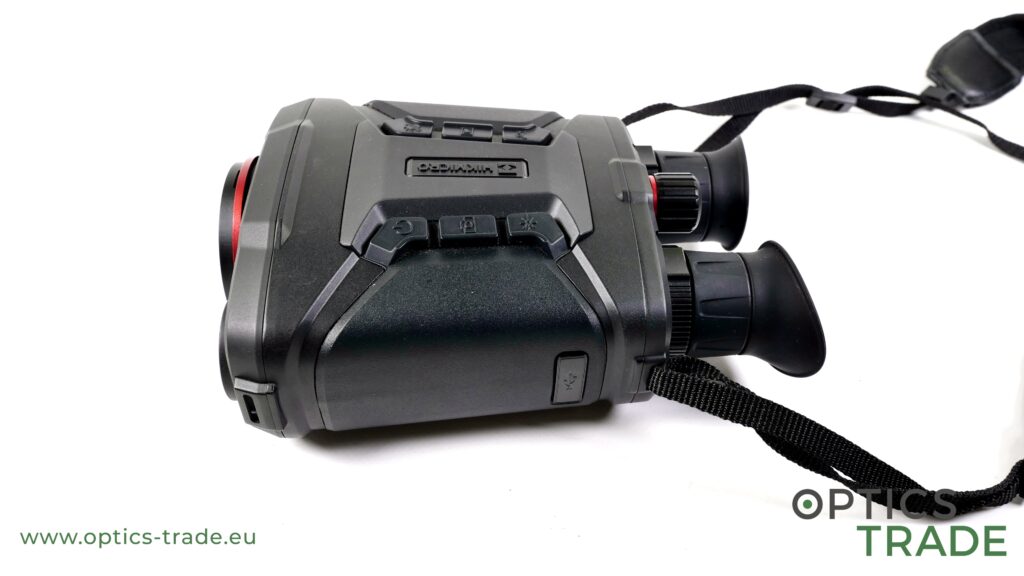
Results of Testing: Thermal Imaging Channel
The thermal imaging channel of the HIKMICRO RQ50LN device proved to be its most impressive feature. The combination of a large sensor with a resolution of 640 x 512 pixels, a 50mm focal length lens, a super-fast aperture with an f0.9 value, and a large OLED display with 1024 x 768 pixels creates an exceptionally detailed thermal image.
Detection, Identification and Recognition
The observed animals’ details were clearly displayed, enabling the recognition of species and, for the most part, also the gender of roedeer. During testing, most roe-bucks still had their antlers covered in velvet, which allowed for a clear display through the thermal imaging channel. Therefore, we can confidently state that the quality of the thermal imaging channel enables the detection, identification, and in most cases recognition of all legally huntable game species at night.
At distances typical for wild boar hunting at night, it is easy to differentiate between adult animals, animals in their first year, animals in their second year and determine their gender, which is sufficient for safe and ethical shooting. In locations where fox and jackal hunting during the night is allowed, the Raptor RQ50LN allows experienced thermal imaging users to distinguish between these two species and other living beings in the hunting area.
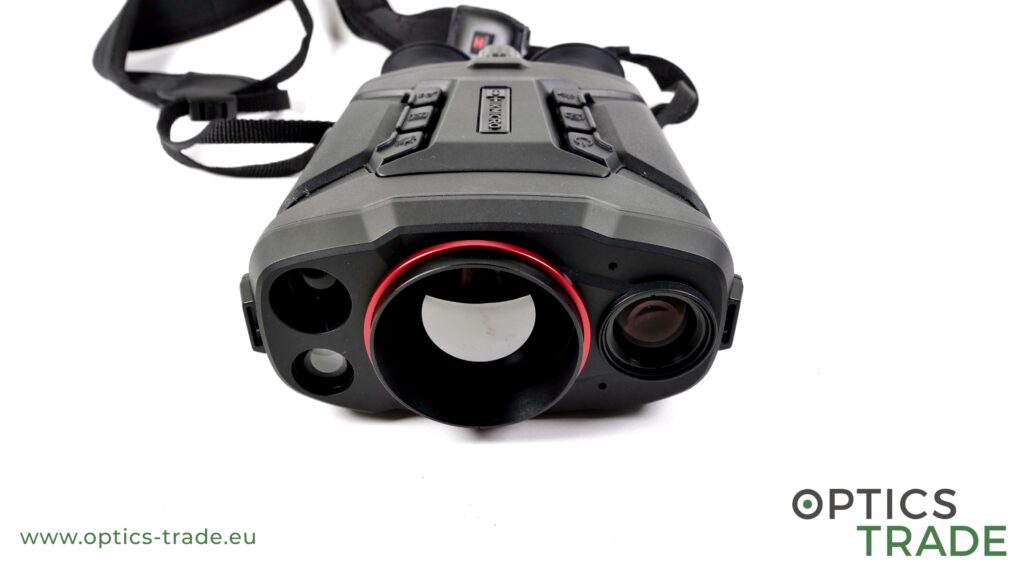
Limitations
However, there were a few limitations when it came to evaluating individual deer at night. Despite the impressive technical specifications, it was not possible to clearly see the antlers of roe bucks once they were completely shed. In such cases, we had to rely on digital night optics, which covered the part of the spectrum where thermal imaging is not the most suitable.
However, the digital night optics part did not meet our expectations. The image of observed game, even at shorter distances, was blurry, and the quality significantly lagged behind the thermal imaging image.
In our opinion, the following factors are to blame:
- Unlike the thermal imaging channel, the optical channel does not allow for image focusing at different distances. As a result, the image is slightly blurry at all distances, and it does not enable the detection of details that would, for example, allow for an approximate assessment of the trophy value of roe buck antlers. It was disappointing because almost all entry-level models of digital night optics monoculars allow image focusing, so we were surprised that HIKMICRO did not incorporate this feature into their top-tier “prime” model. We assume it is not that technically complicated, and someone with experience in night vision hunting should have advised the engineers to include this.
- The basic magnification of the optical channel is relatively low. Although HIKMICRO does not specify this information on their website, we estimate that the magnification does not exceed 3.5x, which is insufficient for game assessment purposes.
- In our testing, we used the RQ50LN model, where the “N” designation means it has a 940 nm wavelength IR illuminator. In practice, this means that the IR light is less visible to animals, but unfortunately, the range and power of illumination are lower compared to IR illuminators with an 850 nm wavelength.
- The alignment of the IR beam was not centred with the optical lens but was predominantly directed towards the lower half of the field of view. As a result, we were forced to position observed objects in the lower part of the field of view, often capturing the sky above the horizon in the upper half, which caused issues with the sensor’s automatic aperture adjustment.
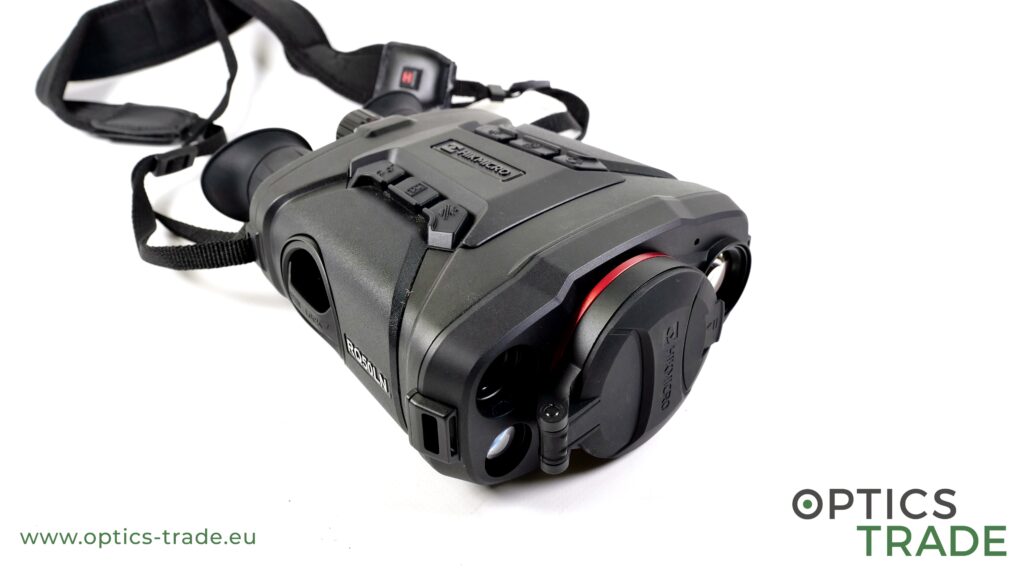
Results of Testing: Day Channel
When using the day channel instead of a traditional daytime hunting scope, we encountered a similar issue as with the night optics. The image from the day channel is colorful and visually appealing, displaying beautiful panoramic shots. However, due to the low magnification and lack of image focusing options, its usefulness for detailed game assessment, which requires observing small details, is limited.
Based on the comparison between the quality of the thermal image and the image from the digital day-night channel, we conclude that the thermal image of the Raptor RQ50LN is more suitable for game assessment (such as wild boars at typical hunting distances near feeding areas).
When observing roedeer both during the day and at night, we were able to discern more details with thermal imaging technology. A clear difference in quality between the two channels is demonstrated by the observation of a one-year-old buck. While it was not possible to accurately determine whether we were observing a male or female yearling with the day-night optics, the thermal image clearly showed underdeveloped antlers or “buttons” on its head.
The use of the day-night channel might be beneficial for target identification when hunting predators (where permitted), as inexperienced thermal vision users could mistake a domestic cat for a small fox or a medium-sized dog for a jackal. However, we must reiterate the truly exceptional quality of the thermal image, which makes mistakes like that almost impossible.
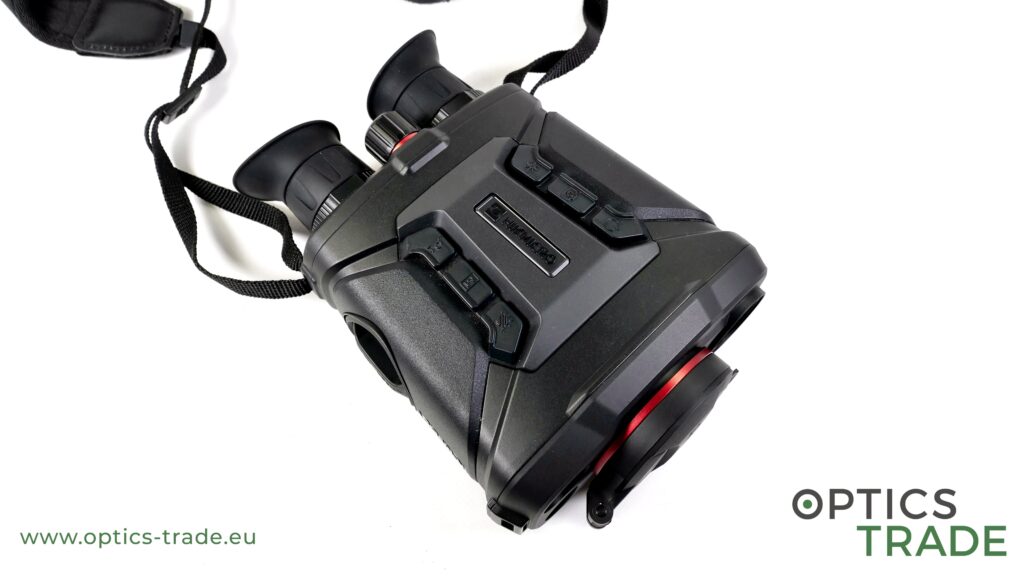
Laser Range Finder
The laser rangefinder on the device has a nominal measuring range of 1000 m with an accuracy of +/- 1 m. In our test, we focused more on the reliability of LRF operation since we didn’t have a reference device to compare the measurements. We verified the measurements using the Google Maps application and confirmed that the measurements were accurate within a distance of 700 m.
However, we noticed that the laser rangefinder had some issues operating in rainy and humid conditions. In such weather, the device often failed to measure the distance and displayed a measured distance of 9 m regardless of where we aimed the laser beam.
Fusion Mode
The Fusion Mode feature, which combines thermal and daytime images, is gaining in popularity among manufacturers. The idea is to merge the positive effects of excellent target detection from the thermal image with the ability to observe details from the visible channel into a single image.
The feature works on the Raptor; however, during testing, we did not observe any significant advantages. The idea has a solid foundation, but it only holds true if the visible spectrum image is actually sharper and has more details than the thermal image. As we have already determined, this is not the case with the Raptor RQ50LN.
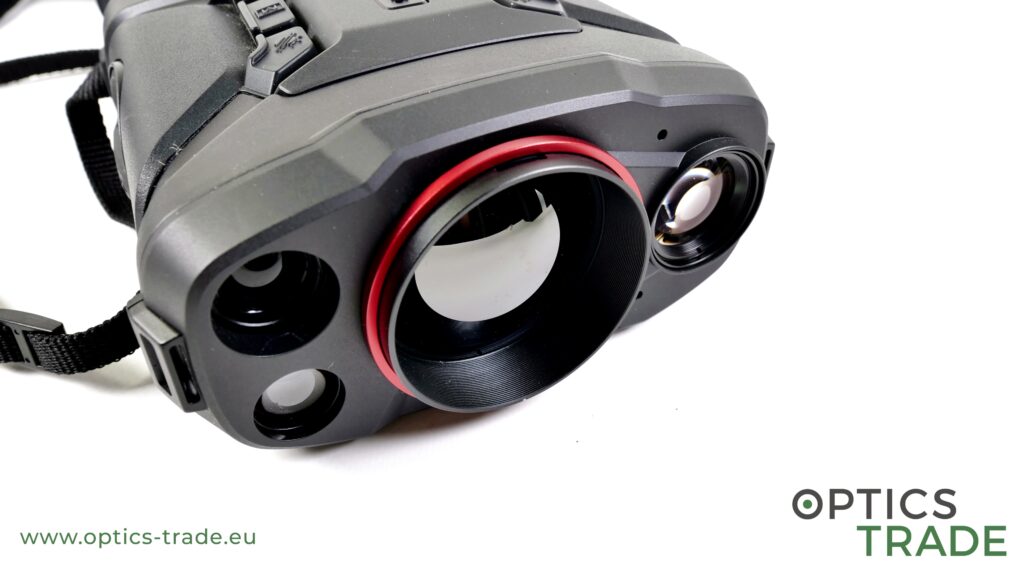
Pros and Cons
The testing of the multifunctional device Raptor RQ50LN did not fully meet our expectations. However, this by no means indicates that it is a poor device, but rather that it is not yet fully capable of the tasks we evaluated in our test.
To avoid any potential unfair impression regarding the quality of the device, we also want to highlight its positive features and hunting applications where it excels.
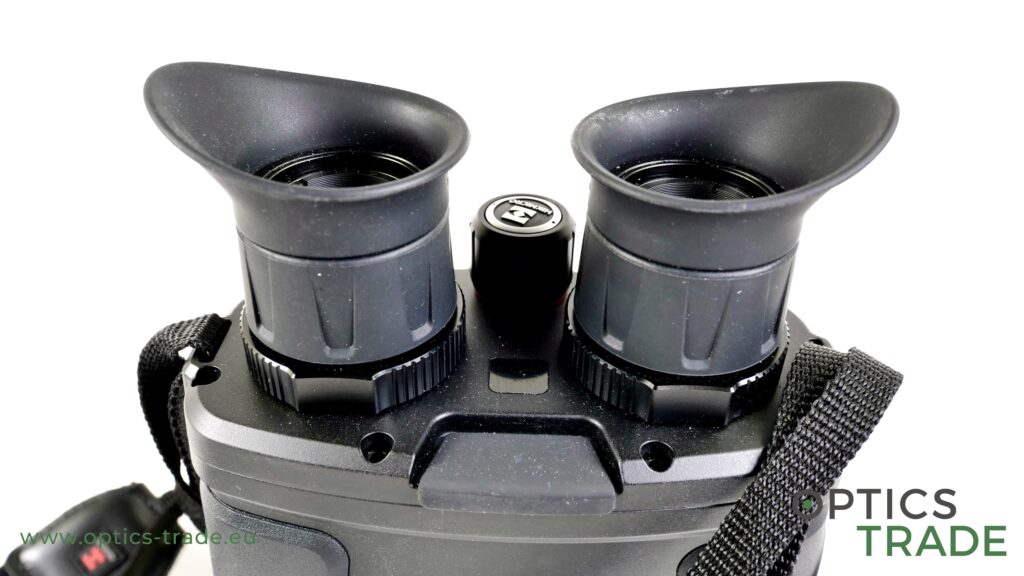
- The device is exceptionally well-designed in terms of ergonomics, offering hunters a recognizable and comfortable shape with its classic binocular design.
- When looking through the thermal device with both eyes, the chances of having temporary problems with vision at night and potential headaches are lower compared to using a monocular.
- The adjustment of the interpupillary distance allows for easy and precise customization for each user.
- The focus button for the thermal image is conveniently located in the usual position for hunting binoculars, rather than on the objective lens as seen in competing devices.
- The device is powered by 18650-type batteries, which are readily available on the market and not tied to a specific manufacturer’s design.
- The battery insertion mechanism is well-designed as well. The device requires three 18650 batteries, which are inserted into the battery compartment using a special insert. We recommend that buyers acquire a spare insert to pre-insert the spare batteries at home, making the replacement process during the hunt last only a few seconds.
- The device also includes a video player that allows for the display of videos and photos on the screen. This is a highly useful feature for quickly reviewing captured footage, which hasn’t been included by many manufacturers so far.
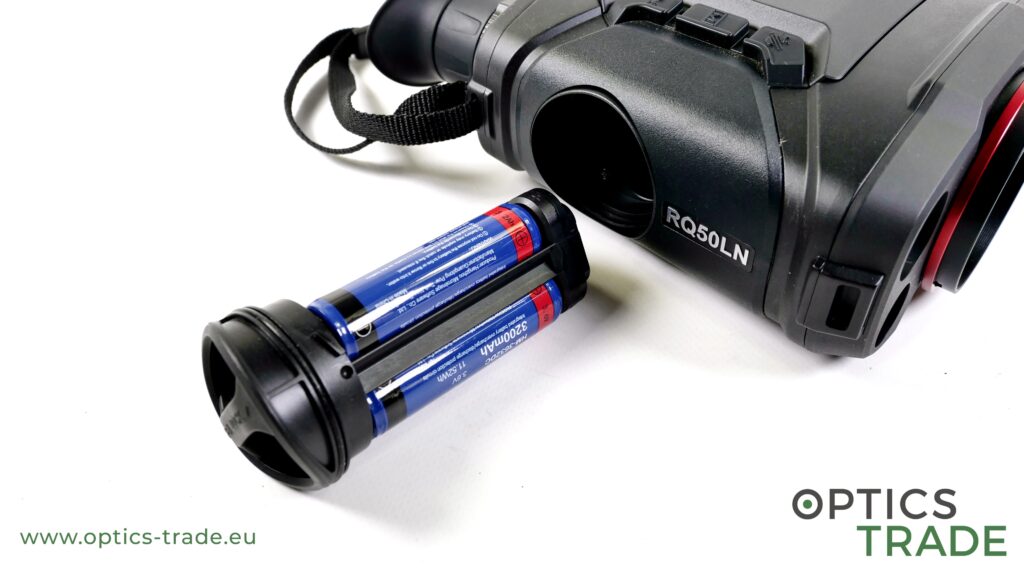
Conclusion
Despite the interesting and advanced idea of combining multiple functions into one device, during testing, HIKMICRO Raptor RQ50LN has not fully achieved the desired result.
Raptor RQ50LN is indeed an exceptional thermal imaging binocular that offers excellent thermal imaging, a comfortable large screen, and a good laser rangefinder; however, there are already several similar devices on the market that do not significantly differ in terms of thermal imaging quality from the Raptor.
The digital day-night channel, which was supposed to be the key advantage of the Raptor over the competition, unfortunately did not meet expectations. In our case, it did not bring real added value and benefits.
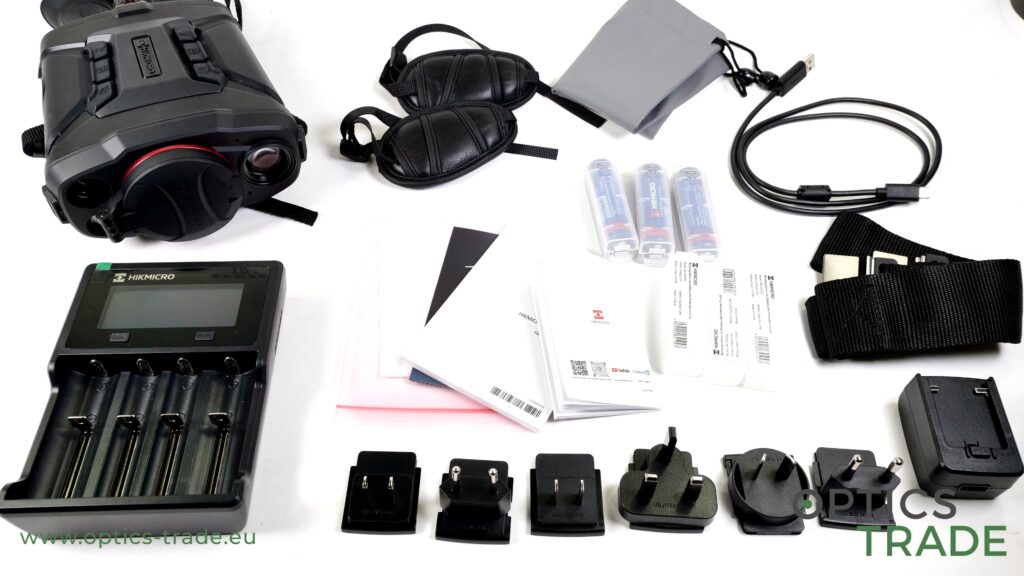
So, who is a suitable customer for the HIKMICRO Raptor RQ50LN?
In our opinion, hunters looking for a thermal imaging device for hunting at night that do not require a traditional hunting scope. However, the HIKMICRO Raptor RQ50LN cannot replace a traditional hunting scope for daytime observation. In such cases, we recommend purchasing a thermal imaging monocular, which is more compact and can be combined with standard binoculars.
Looking for Fusion Binoculars?
Find out MORE about HIKMICRO: www.hikmicrotech.com
Gallery







